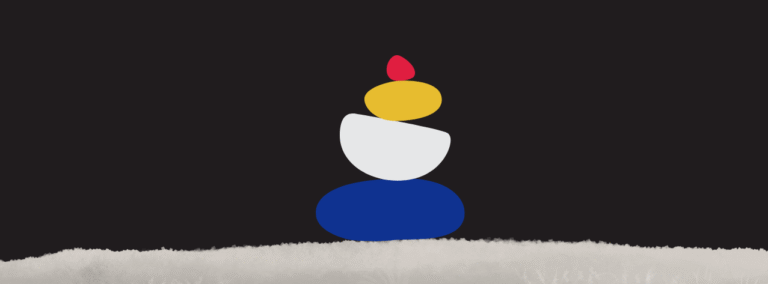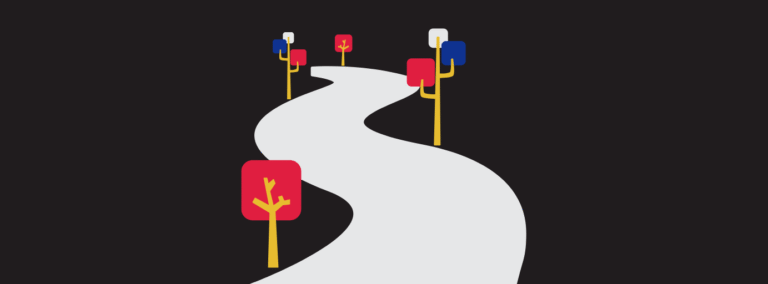… And How My Mental Health Pushed Me Toward One or the Other.
Why the Need to Define Things?
Why do we feel the need to label and define everything? Human curiosity drives us to explore contrasts and complexities more deeply — and honestly, I love that. Trying to define what design and art really are doesn’t matter as much in the grand scheme of things. Everything is relative. But as I’ve reflected on how both have shaped my life, I’ve discovered patterns that helped me better navigate my creative process — and that’s what I want to share here.
The Big Question That Bothers Designers and Artists
Is design the same as art? This question sparks endless debates, often with no definitive answer. Why? Because it’s not about right or wrong — it’s about patterns, mindset, and how you approach creativity. I’ve been a Web (UX/UI) designer since 2011 in Brazil and later a Lead UX/UI Designer in Canada, and I’ve often questioned the distinction. Why? Because I’m a curious mind — and if you’re reading this, you probably are too. 😆
As an artist, I’ve been writing songs since 1996 and creating digital art for the past seven years. I’ve always tried to differentiate these two fields. Why? Because while art has always been personal for me, design seemed to sell better. But it’s more complicated than that, both philosophically and practically. Let me explain.
Why Art Was Never a Product for Me
I’ve used art as a form of emotional regulation and personal therapy since I was young. It’s always been a way to express feelings, a safe space where I could process my experiences. This creative expression feels deeply personal, providing comfort and security within my personality. Selling it felt like it would break its innocence and purity — an extremely personal barrier for me.
Even when I managed other artists through Papaya Productions, art remained a personal outlet for self-expression rather than a transactional product. When you’re creating art for emotional release or self-discovery, it can be hard to reach a large enough audience to justify full-time commitment.
For me, there was also a psychological block: I rarely shared my work publicly. And if you don’t share your art or ask for help in promoting it, how can you expect to monetize it? Art exchanged for money becomes a business — and back then, I wasn’t ready for that shift.
How Design Became My Anchor
When I shifted to design, I discovered something freeing: the concept of solution. The idea of helping others achieve a specific goal separated my emotions from the “business hat” I had to wear. Suddenly, I could justify pricing, value, and impact based on strategy, fundamentals, and technology — not personal expression.
For example: If a home painting company approaches me asking for a “beautiful and functional” website, my focus shifts from pure aesthetics to a problem-solving mindset. I analyze their brand (if they have one), study their competitors, refine their target audience, identify market gaps, and make data-driven design decisions. The result? A website that’s not just visually pleasing but optimized for conversions and growth. Design becomes a solution with measurable results, which makes pricing easier to justify.
But this sparked a personal question: Could I apply this structured mindset to my art?
Self-Awareness, Mental Health, and the Art Trap
In a previous video on my channel, I talked about purpose — but I want to go deeper here. Self-awareness is a powerful tool. It helps us make complex decisions, plan better, and perform with clarity. I’m naturally spontaneous in my creative process, but that often leads me to procrastinate. Purpose, however, keeps me grounded. It reminds me why I started and helps me stay on track when motivation fades.
I identify as an INFP-T (Turbulent Mediator), a personality type prone to overthinking, melancholia, and emotional depth. While this can be a creative gift, it can also be paralyzing, especially when mixed with perfectionism.
A key lesson I’ve learned: Thinking it’s “not enough” is unfair in 99% of cases. Everyone starts somewhere. And when it comes to art, raw emotions can be powerfully expressed even with minimal technical skills. Honest expression matters far more than perfection.
What Really Separates Design from Art (For Me)
When I’m designing, I’m tapping into my creative skills, but with a clear goal: solving a client’s problem. Even when working on personal projects, my design process involves research, planning, and — most importantly — feedback. This results-driven focus is what separates design from art for me.
Art, on the other hand, often feels more personal. While planning and research can be part of some art projects, feedback plays a smaller role. Authentic art, to me, is born from raw emotion and unfiltered ideas, free from the constraints of external validation.
In Summary:
- Design is a project focused on solving a specific problem for someone else.
- Art is a personal, authentic expression of knowledge and emotion, often with no goal beyond self-expression.
Final Note:
I don’t claim to define design and art as absolute truths. These are complex, evolving languages with different contexts and personal meanings. I’m simply sharing my reflections as a curious mind exploring my creative identity.
If this resonates with you, or if you’ve ever felt these struggles balancing both, let’s keep the conversation going!




